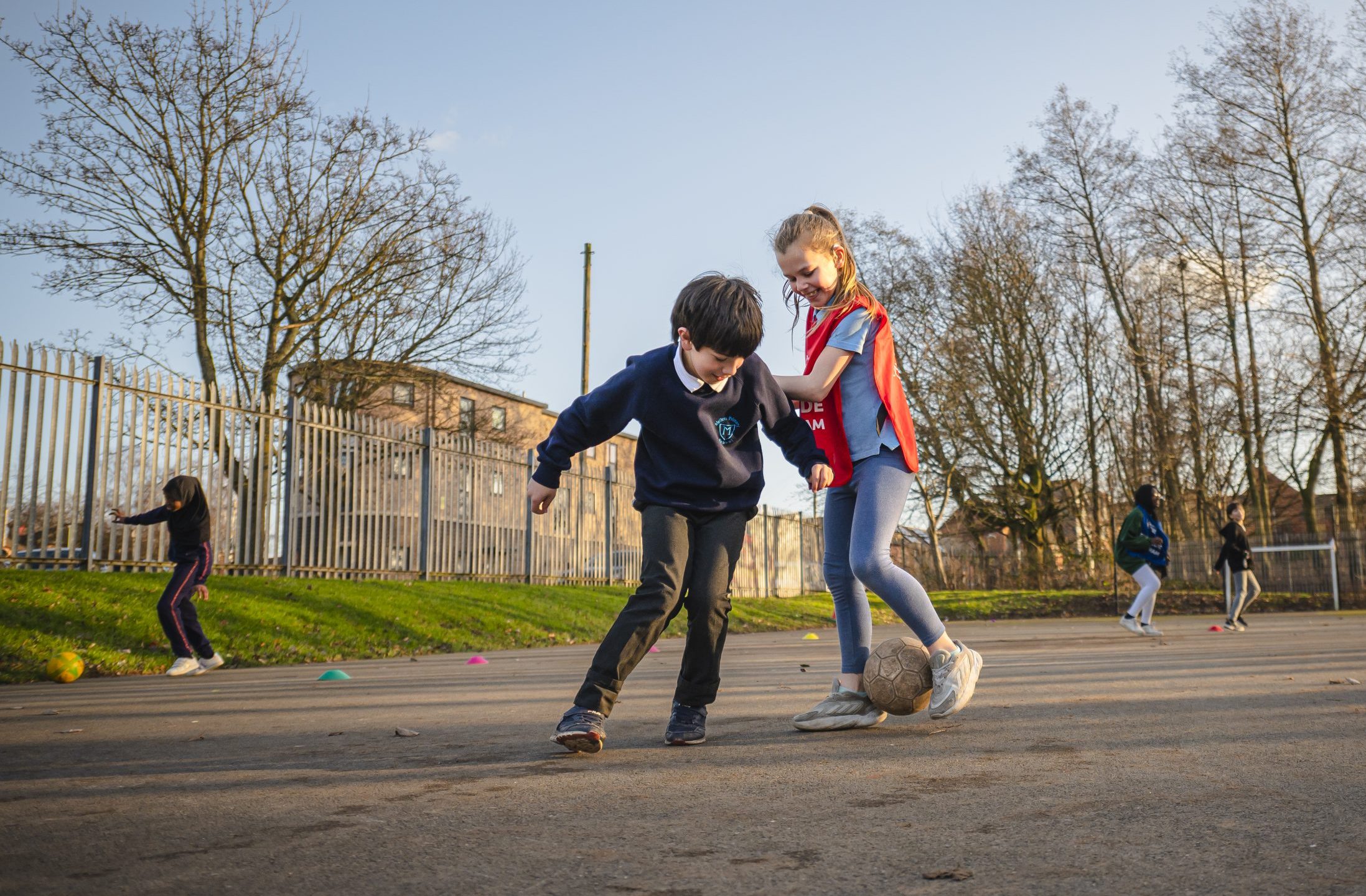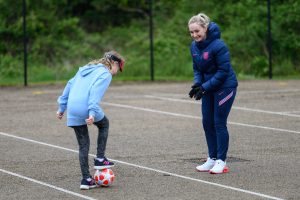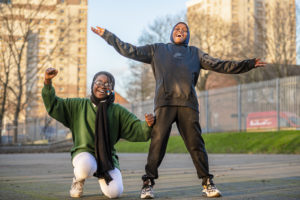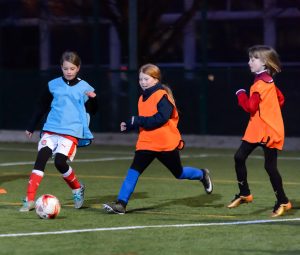
Share the playground; level the playing field
Published
Important to Women in Sport is sharing the voices of women and girls. Our ‘Mum on the Sidelines’ offers a real, authentic and often funny observation of what is stopping girls from taking part in sport by exploring the everyday inequalities that occur on the sidelines and ask you to share yours too. One mum from the sidelines writes…

When we think about playgrounds, generally, we assume the boys play football, and the girls sit around and chat. Boys will be boys, and girls will be girls… centuries-long stereotypes alive and well in our modern-day schools. Is it time for a change?
We’ve heard the arguments before. The parents of boys insist their sons need lots of space to run around. Their sons enjoy the games of football played during break times. It feeds their physical and mental needs and gives them an outlet from the rigidity of the classroom. Boys taking up space, in the middle; with girls on the periphery, watching and not welcomed. A weird battle of the football players/active boys and the girls who are exiled – either deliberately or by circumstance and chaos.
From an early age, the playground becomes a minefield of gender segregation. Quickly different playground zones are ‘gender marked’. It’s almost like dogs peeing on the lamppost behaviour. The kids rush out to claim their prized area. Any space big enough quickly turns into a makeshift football pitch. The space around the outside, perhaps with a climbing frame or quiet zones are for non-active kids or girls. Generally, these spaces are smaller and more ‘bitty’. If girls wanted to start their own game, the area they are left with often is not conducive to activity.
Are we ‘training’ girls to watch from the sidelines? Are we taking away their ability to be active and spread out in the playground?

I have a boy and two girls. I have seen it from both sides. I have witnessed countless tears because some of the boys cheated during the high stakes lunchtime football competition, and frustrations when younger kids or girls ‘wreck’ the game. I have also listened to many words of frustration from girls who want to be active at breaktimes but aren’t ‘allowed’ or who feel shy at the prospect of being the only girl in an all-boy environment (hmmm sounds like some boardrooms)… Girls who if ‘allowed’ by the boys to play, then get excluded by never being passed the ball
Are we establishing a pattern of behaviour, from the early years, in which the needs of girls come second to boys?
Likely we are setting the foundations for unconscious bias that we will then spend millions of pounds trying to unravel within the workplace later in their lives.
As a society, we have a job to do to bring greater equality to the world in which we live. This greater equality is needed in the workplace, in sport, in schools and even in homes. We have an opportunity to raise a generation of humans who celebrate differences and are creative about problem-solving using these differences as a springboard. And yet, we don’t stop to think about the patterns of behaviour imprinted on children throughout their schooling. Children by and large seem to mix very well in classrooms, yet as soon as it is time to ‘share the playground’, those niceties are forgotten.
This is not about plonking netball courts into schools to facilitate a ‘boys play football and girls play netball’ approach. We need to reflect on how we can keep girls and boys active during school and set up healthy patterns of behaviour that embody respect and tolerance.

A positive outcome of the pandemic has been some schools allowing children to wear their sports kit to school on games/PE/sports days. The benefit of sending kids to school in sports clothes and trainers amplifies the conditions beneficial for activity. Not being constrained by a dress and Mary-Jane patent leather shoes must be a game-changer for many girls. My girls often talk about wanting to go on the monkey bars and doing flips on the play equipment without the embarrassment of others being able to see their underpants. I can see their point!
Let’s tackle this issue by
- Ditching the outdated girls vs boys uniforms and simply allow children to wear clothes appropriate for the level of activity they foresee in their day. If they choose PE/sport kit 5 out of 5 days, consider it a win. Their bodies will be energised, ready to take on their classroom learning activities.
- Developing and promoting mixed sports at breaktimes to encourage a mindset shift, particularly in the early primary years.
- As children get older, allowing for designated slots for girls’ active play and boys active play to ensure both boys and girls recognise the needs for everyone to be active during break times.
- Ensuring we see breaktimes as part of teaching and learning. Making sure formal education doesn’t ‘switch’ off at breaktimes and recognise this as a golden time to set patterns where the needs of girls are valued as much as the needs of boys.
Let’s make some little steps towards creating an environment where girls feel comfortable being active and sporty during school. We will then slowly begin to influence the gender stereotypes and empower girls to thrive. If we can teach our children to share the playground, we have more chance of levelling the playing field.
